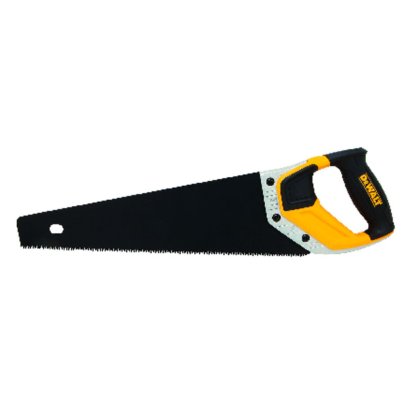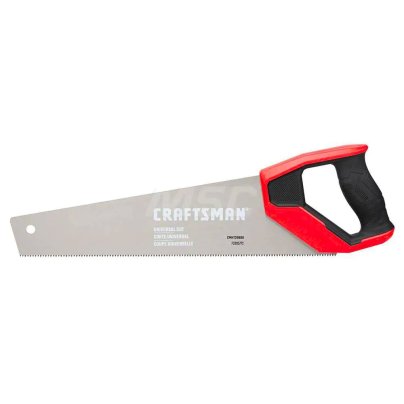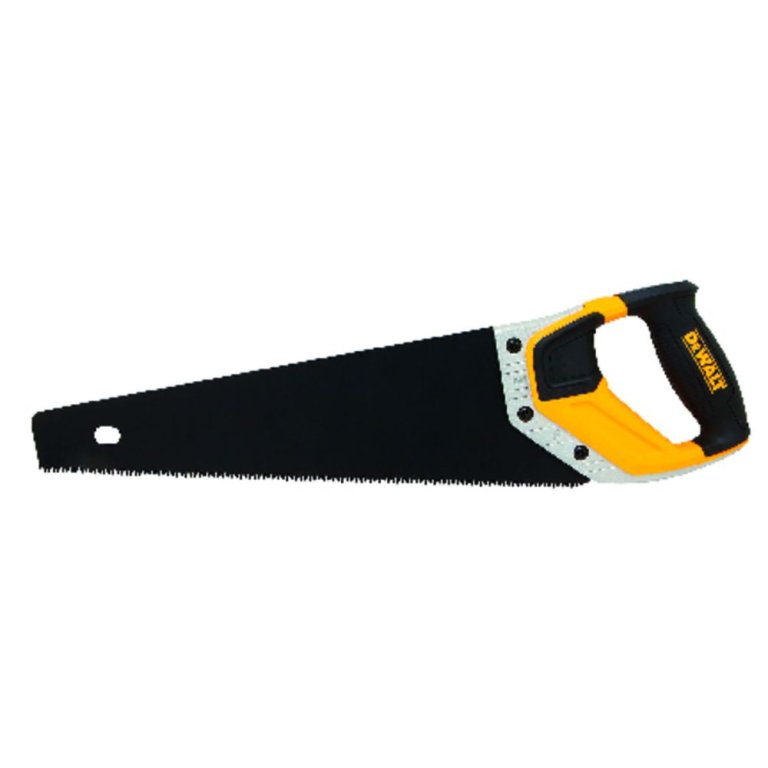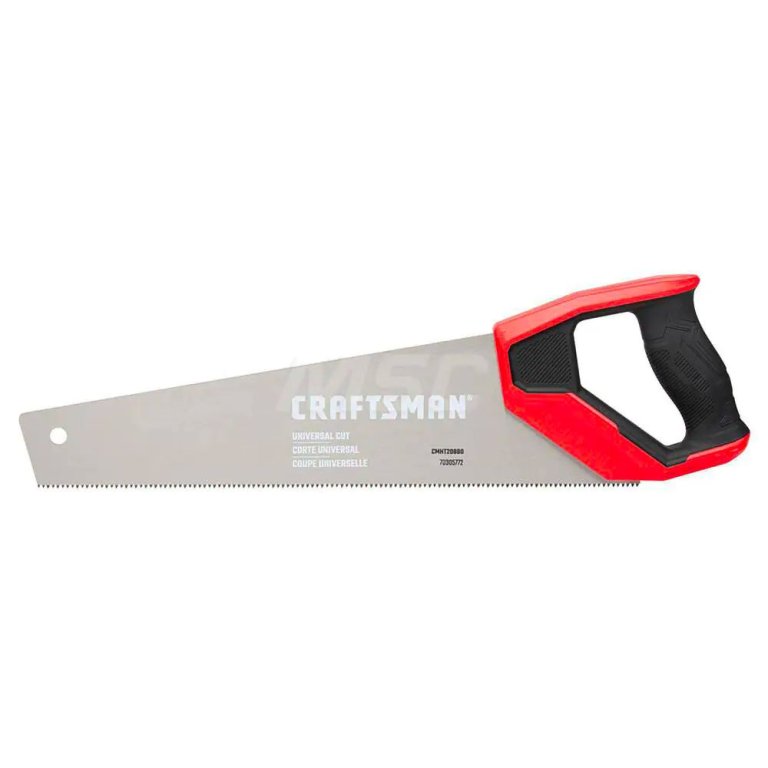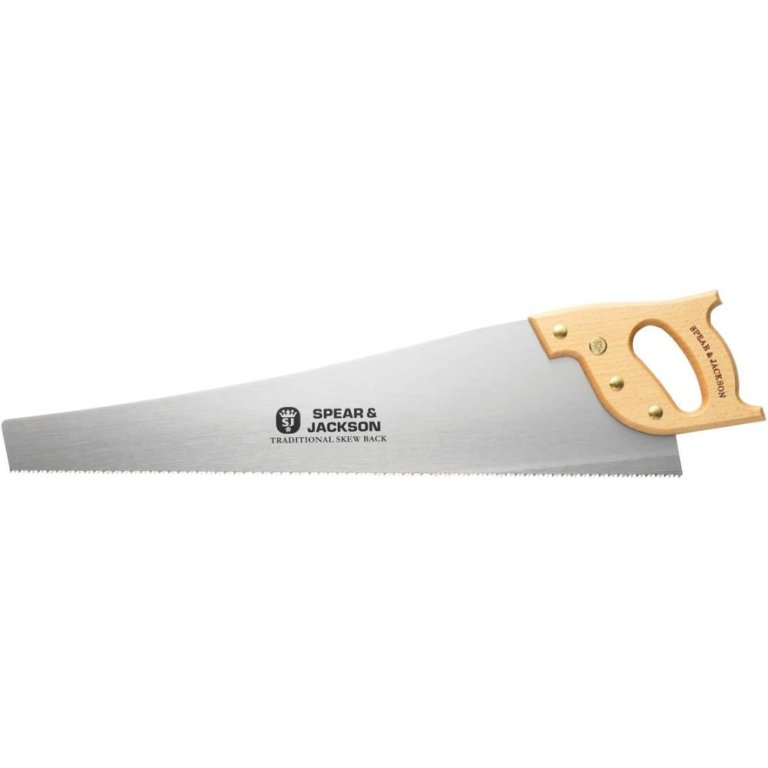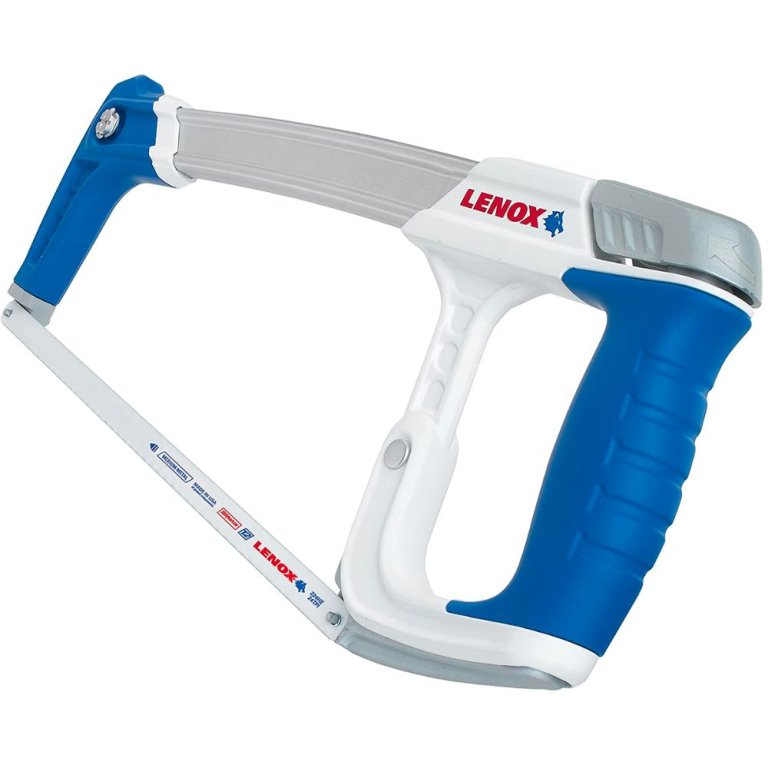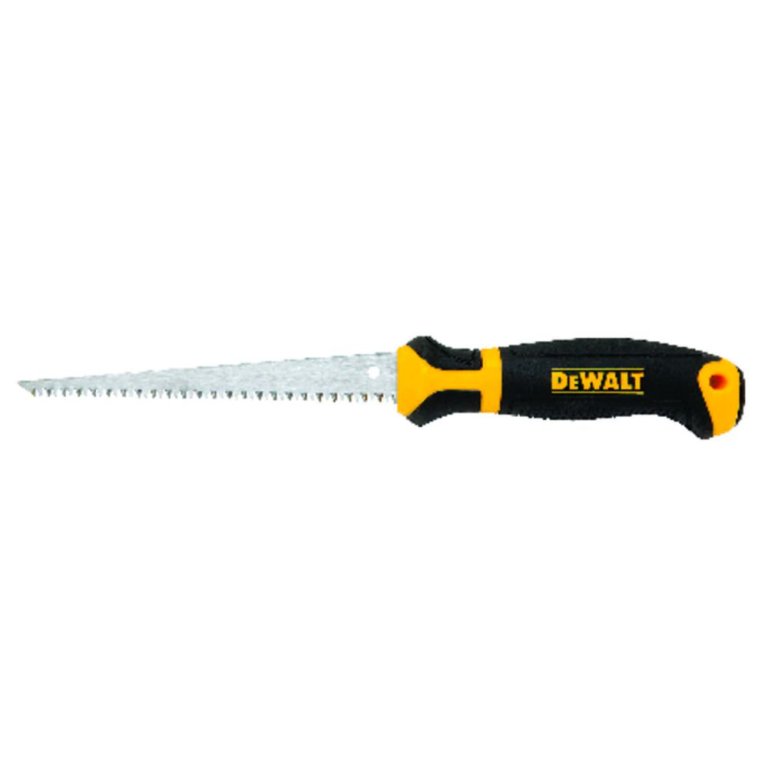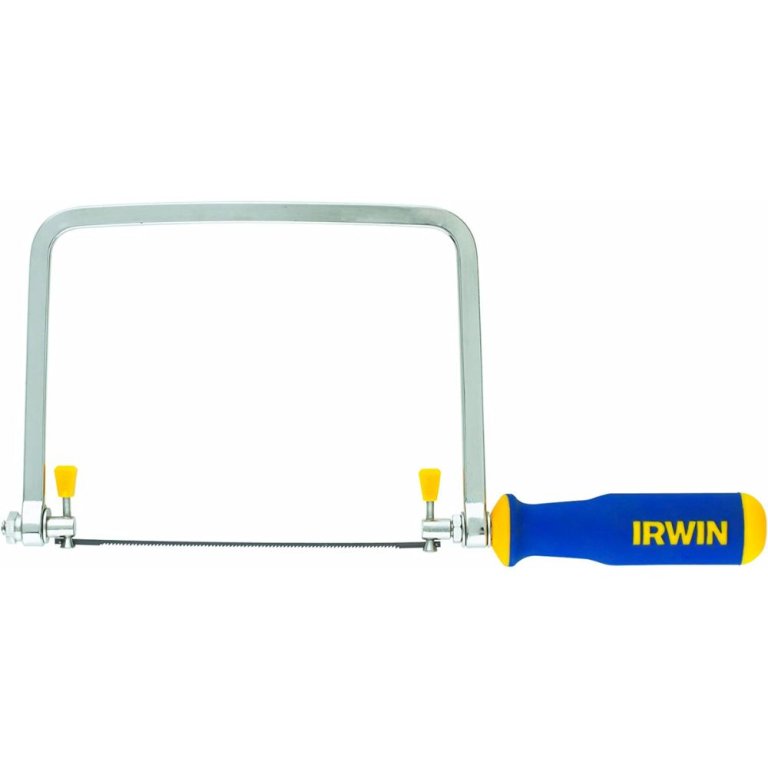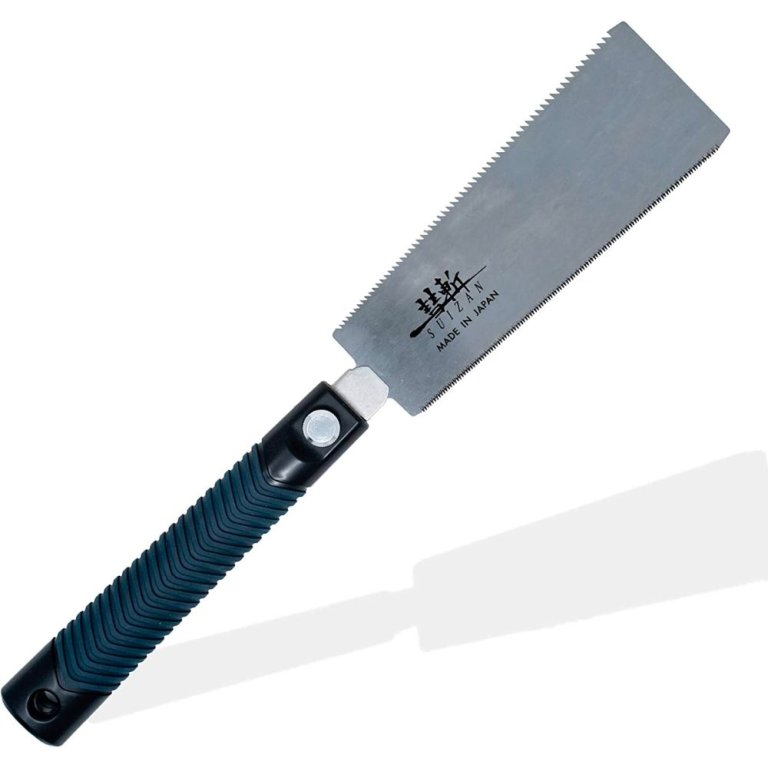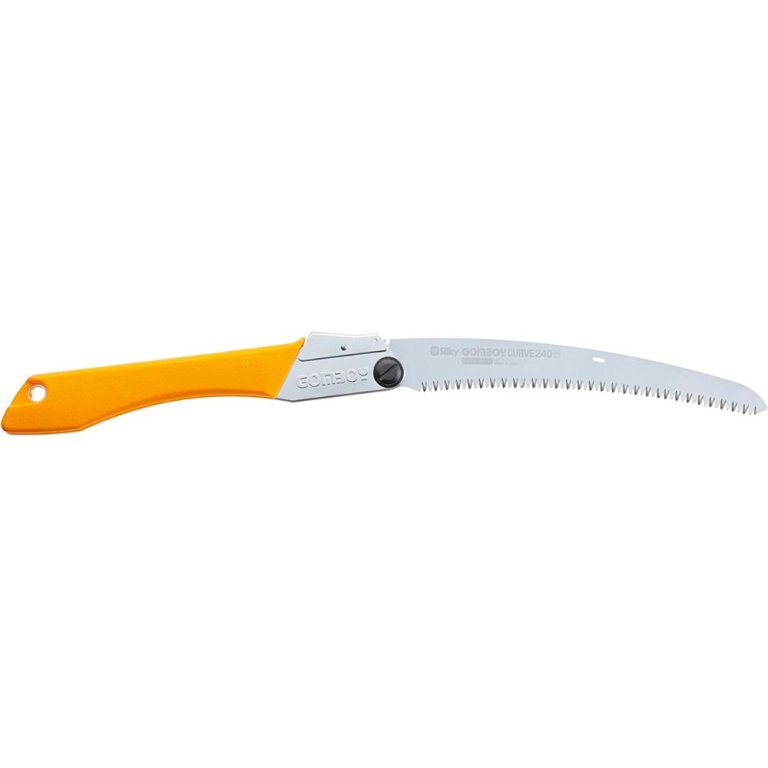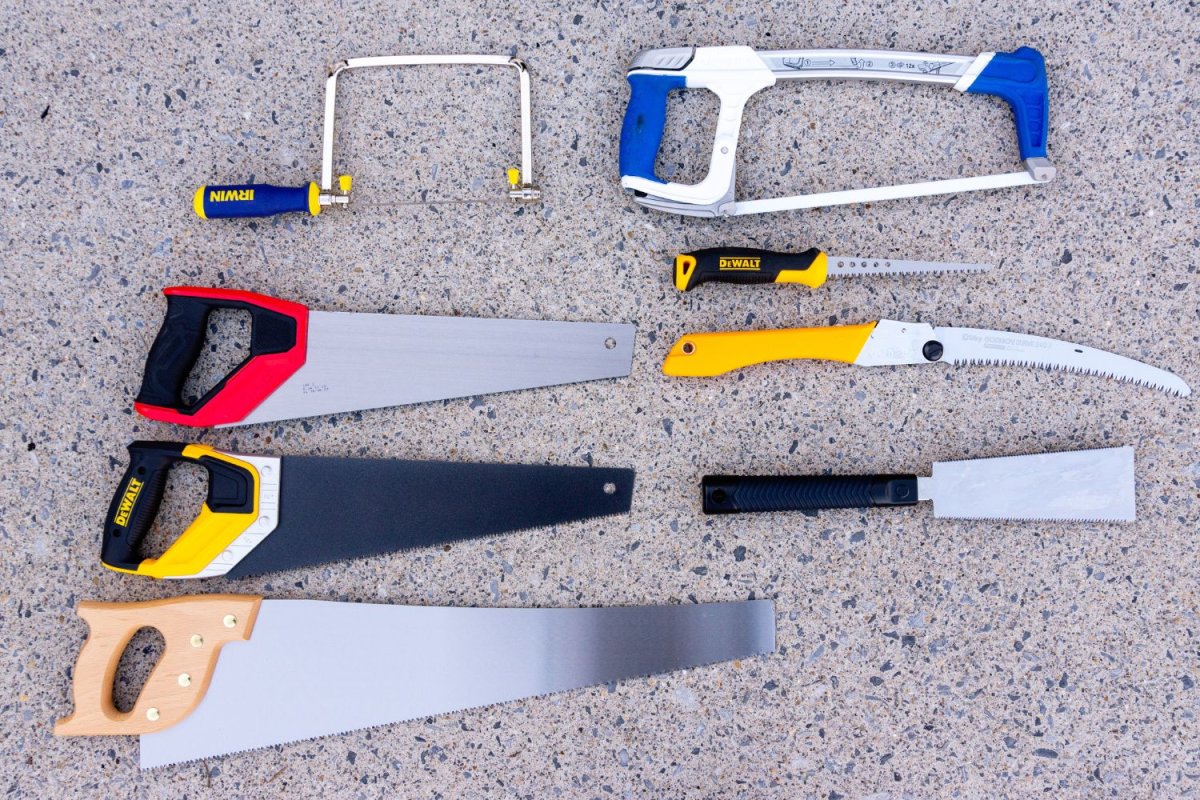
We may earn revenue from the products available on this page and participate in affiliate programs. Learn More ›
Walk the aisles of a home improvement store and it seems that every project requires power tools—compound miter saws, circular saws, jigsaws, reciprocating saws, and more.They make hand saws seem like relics from the past. Though it might seem like there’s a power saw for every cutting need, the fact is a hand saw for wood is still a vital tool. Sometimes, only the best hand saw can get the job done.
Using a hand saw obviously means there’s no need for electricity or batteries. These tools are lightweight, portable, easy to use, and often the best choice for specific tasks. Need a clean finished cut on a 6×6 timber? Trimming a few small tree limbs? A hand saw is almost always the best choice.
We tested eight highly rated hand saws from the most reputable tool brands. Whether you need a tool that can cut lumber, PVC pipe, metal, or branches, this guide can help. Read on to learn about the criteria we used to choose these saws, how they performed in testing, and why we think they are some of the best hand saws around.
- BEST OVERALL: DeWalt DWHT20544 15-Inch Hand Saw
- BEST BANG FOR THE BUCK: Craftsman CMHT20880 15-Inch General Purpose Hand Saw
- UPGRADE PICK: Spear & Jackson 24-Inch x 7 pts Skew Back Saw
- BEST FOR METAL: Lenox HT50 High Tension Hacksaw
- BEST FOR DRYWALL: DeWalt DWHT20540 Jab Saw
- BEST FOR PRECISION CUTS: Irwin 6½-Inch ProTouch Coping Saw
- BEST FOR WOODWORKING: Suizan 7-Inch Japanese Ryoba Pull Saw
- BEST FOR CAMPING: Silky Gomboy 240 Folding Saw

How We Tested the Best Hand Saws
We researched the most sought-after hand saws in their respective categories and discovered that the best models are determined by type, size, tooth count, and suitability for cutting different materials. Our picks included panel saws for general carpentry, along with hacksaw, jab, coping, dovetail, and pruning saws for more specialized tasks. Our selections run the gamut from 8 to 24 teeth per inch (TPI) for fast, aggressive cutting or fine finish work.
After unpacking and recording each saw’s size, weight, and TPI, we got busy, setting up “real-world” testing scenarios for each saw according to the tool’s design and intended use. Then we recorded our observations on a scoring rubric before awarding the “Best For…” awards used here.
We used the panel saws to cut 2×4 lumber across the grain and at a 45-degree angle and ripped 1×6 boards parallel to the grain. To test the hacksaw, we cut a steel pipe and a T-post clamped in a vice, then assembled a PVC pipe through a piece of plywood to simulate a flush cut. We mounted a square of drywall between 2×4 boards and drew cutout guide lines to test the jab saw.
We mitered sections of crown molding and baseboard trim at 45-degree angles and scribed the profiles at the ends in order to simulate fitting inside corners with the coping saw. To test the Japanese pull saw, we performed a series of crosscuts, 45-degree cuts, and rip cuts in several thicknesses of hardwood and softwood 1×4 boards. Finally, we tested the pruning saw by cutting through live branches and dead and dried limbs ranging from 2 to 4 inches in diameter.
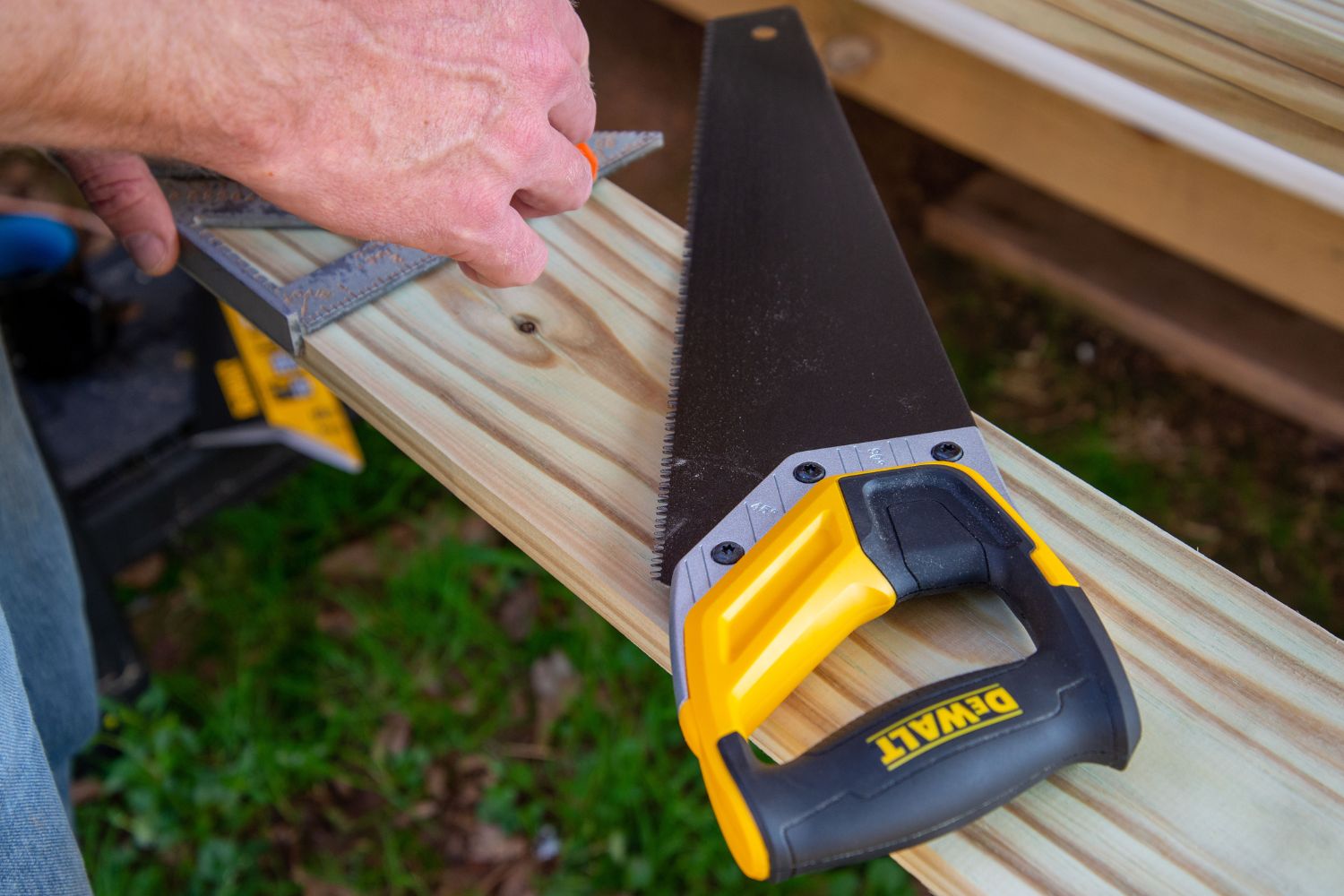
Our Top Picks
Find out more about each of the saws we tested in the individual product reviews ahead. We discuss the tool characteristics, overall quality, and our personal observations from testing. One of these tools may be the best hand saw for your next project.
Best Overall
DeWalt DWHT20544 15-Inch Hand Saw
Pros
- Hardened-steel triple-ground teeth cut faster than conventional cross-ground teeth
- Smooth, tough blade coating resists binding and sap buildup
- Blade alignment and cushioned grip make the saw comfortable to use
- Compact size allows for portability and ease of use in close quarters
Cons
- Somewhat heavier than the similarly sized Craftsman hand saw we tested
Product Specs
- Type: Panel saw
- Number of teeth: 8 TPI
- Length: 15 inches
DeWalt has built a strong reputation for quality tools at a fair price. This 15-inch panel saw makes a great choice for general carpentry projects including construction, fine woodworking, and repairs and maintenance. It features triple-ground induction-hardened teeth that enable the wood saw to cut up to 50 percent faster and stay sharp longer than other hand saws with traditional cross-ground teeth. A tough coating protects the high-speed steel blade from corrosion while reducing friction for easier, more efficient cutting strokes.
This 15-inch DeWalt hand saw has eight teeth per inch and is designed to cut on both the push stroke and pull stroke for rapid material removal. The blade attaches securely to the aluminum handle with three screws, and a cushioned synthetic grip increases user comfort. The handle features an integrated 45-degree and 90-degree angle guide. The handsaw weighs 16 ounces.
Based on average stroke count, the DeWalt saw did indeed cut faster than the other panel saws in our test group. It was comfortable to work with, moved smoothly through the wood, and worked well at different angles. It tracked well, easily making nice square cuts, and left fairly clean edges with just a few rough spots. We liked the compact size, although it bears mentioning that the shorter blade exposes each tooth to more wear and tear per cut compared to traditional 24-inch and 26-inch blades. Still, with the quality of the materials used to make this saw, we anticipate a good, long working life under typical working conditions.
Get the DeWalt 15-inch hand saw at Ace Hardware, The Home Depot, or Acme Tools.
Best Bang for the Buck
Craftsman CMHT20880 15-Inch General Purpose Hand Saw
Pros
- Triple-ground tooth configuration cuts quickly and provides less binding
- Induction-hardened teeth resist dulling and damage from nails or hard woods
- Sturdy, lightweight handle with a nonslip grip provides better control
Cons
- Not suitable for use on plastic, concrete, drywall, or metal
Product Specs
- Type: Panel saw
- Number of teeth: 8 TPI
- Length: 15 inches
One advantage of hand saws is that they aren’t as costly as electric hand saws, and this 15-inch Craftsman tool is one of the most inexpensive models available. Yet it doesn’t compromise efficiency for price. It features an 8 TPI tooth configuration with triple-ground teeth that cut deeper on the downstroke and milder on the backstroke for fast, smooth material removal. With its induction-hardened teeth, the carbon steel blade will stay sharp for a long time.
For added control, this saw boasts a beefy handle, giving users something substantial to hold, as well as a rubberized grip for greater comfort when sawing thicker boards. The handle also features built-in 90- and 45-degree angles for drawing clean and precise cut lines with the dull side of the blade. This lightweight hand saw weighs just 11 ounces.
We were impressed by the Craftsman hand saw’s fast and accurate cutting ability. In brand-new condition, it cut nearly as fast as the DeWalt saw, both on the single-stroke test and in the average strokes-per-cut test. However, the blade steel is a notch lower in quality, so we would expect it to dull somewhat sooner than our Best Overall pick; it’s also more susceptible to rust if left exposed to the elements. Occasional users who store the saw clean and dry may never experience a dull blade.
The saw moved well, even through deep cuts in thicker wood, and left fairly clean edges. The handle felt comfortable in hand and aligned well with the blade for efficient work. We noted that the synthetic handle seemed to be molded directly to the blade, so it should remain nice and tight for a long time. Overall, this saw presented an excellent price-to-quality value.
Get the Craftsman hand saw at Lowe’s or MSC.
Upgrade Pick
Spear & Jackson 24-Inch x 7 pts Skew Back Saw
Pros
- Longer blade for more efficient cutting strokes and less user fatigue
- Traditional skew-back design improves the tool’s balance and reduces drag
- Cross-ground teeth can be resharpened to extend the saw’s working life
- Suitable for crosscutting or rip cutting all kinds of wood as well as PVC
Cons
- Wood handle is more susceptible to cracks and damage than some synthetic materials
- Larger size is less suitable for portability or tool box storage
Product Specs
- Type: Panel saw
- Number of teeth: 7 TPI
- Length: 24 inches
Classic designs remain relevant when it comes to high-quality hand tools. This panel saw from Spear & Jackson incorporates traditional materials and craftsmanship for outstanding versatility in the workshop or on the jobsite. The 24-inch blade with its lightweight skew-back design offers a longer, more efficient saw stroke than shorter saws as well as excellent balance. The classic triple-riveted wooden handle offers a secure, comfortable grip.
This is the only back saw we tested that features resharpenable cross-ground teeth and a carbon-steel blade. Carbon steel is known for good edge retention and how easily it takes on a keen edge when sharpening. Favorable tooth geometry and 7 TPI make this saw a good choice for both rip sawing and crosscutting rough-sawn lumber. The saw weighs 1 pound 6 ounces.
We liked the long blade on the Spear & Jackson panel saw. The added length was especially helpful in reducing fatigue while cutting wider and thicker boards. Although we did not make enough cuts to dull the blade (that may have taken a few days’ work), we would expect this saw to stay sharp longer than the shorter models simply because a longer blade and more saw teeth means less wear per tooth.
On the other hand, this saw cut marginally slower than the DeWalt when we calculated the average strokes per cut and adjusted for the difference in blade length. But this saw outshined the other panel saws in the rip saw test, so it makes the best choice for versatility as well as total working life for those willin
Get the Spear & Jackson hand saw at Amazon.
Best For Metal
Lenox HT50 High Tension Hacksaw
Pros
- High-tension blade makes cleaner, more accurate cuts with less twisting
- Rubber gripped handle resists slipping and improves user comfort
- Storage cavity for up to 5 blades saves time and tool box space
- Deep throat spacious enough to cut pipes up to 4 inches in diameter
Cons
- Heavier and bulkier than other hacksaws; may increase user fatigue with extended use
Product Specs
- Type: Hacksaw
- Number of teeth: 24 TPI
- Length: 12 inches
When it comes to effectively cutting metal, a high-tension blade is crucial to ensure a straight cut. But how much tension is enough? This hacksaw from Lenox creates blade tension up to 50,000 pounds per square inch (PSI) to enable making a straight cut through even the toughest materials. The comfortable rubber grip gives the user ample control of this small saw.
The saw offers plenty of cool features, including a convenient storage cavity for up to five blades and a bracket for a second blade that turns the tool into a jab saw. The saw comes with a 12-inch 24-TPI bimetal hacksaw blade, and it weighs in at 1 pound 9 ounces.
We tested the Lenox HT50 on tubular steel pipe, a steel T-post, and for flush cutting 4-inch PVC pipe. In each case, the high tensile strength of the blade bracket prevented binding and twisting, even when the blade became pinched in the workpiece near the end of a cut. It cut quickly and accurately every time.
Another nice feature was the option to mount the blade either straight or at a 45-degree angle. The angled blade mounts made it much easier to flush cut the PVC pipe down to the plywood surface from which it extended, without marring the wood.
The saw did not come with a jab saw blade, so we tested that feature with a 6-inch reciprocating saw blade that we had in our shop. It worked, but maneuvering the heavy saw body behind the smallish blade felt a bit cumbersome.
Get the Lenox hand saw at Amazon, Ace Hardware, or Acme Tools.
Best For Drywall
DeWalt DWHT20540 Jab Saw
Pros
- Molded rubberized handle for a comfortable grip and good control
- Suitable for cutting drywall, plastic, and other thin wood materials
- Triple-ground induction-hardened teeth for faster cutting and better wear resistance
Cons
- Purpose-built for a narrow range of cutting tasks; low versatility
Product Specs
- Type: Jab saw
- Number of teeth: 8 TPI
- Length: 6 inches
Comfort is paramount in quality handheld tools, especially for dirty jobs like hacking through drywall. Without a motor, the sawyer’s arm does all the work—so one reason why we like this DeWalt jab saw is its molded rubberized grip, which provides a firm, solid hold.
Thanks to aggressive tooth geometry at 8 TPI, this saw makes quick work out of drywall cutting jobs. It speeds through projects with less effort and can cut through other building materials, too, including plastic. And, with its induction-hardened teeth, the blade should stay sharp through many projects. The saw blade measures 6.5 inches long, and the tool’s total weight is just 4.5 ounces.
When we tested the DeWalt jab saw, several helpful features stood out. The tip of the saw was not as fine as some others we’ve used, but the added metal and sharpness made for a strong configuration that penetrated ½-inch drywall easily. A flat spot at the rear of the handle offered a convenient spot to strike for added force. The long triple-ground saw teeth cut into the drywall cleanly without tearing the paper at the edges of the cut. The cushioned handle was comfortable to grip and made it easy to control the blade for straight or curved cutting.
Our only criticism, which is oddly common among this kind of saw, is that it does not come with a blade cover. The sharp point and sharp teeth can wreak havoc on a soft-sided tool bag and risk injuring anyone caught unaware. It’s a top-notch tool when needed, but be sure to store and transport with caution.
Get the DeWalt jab hand saw at Ace Hardwareor The Home Depot.
Best for Precision Cut
Irwin 6½-Inch ProTouch Coping Saw
Pros
- Strong flat bar steel frame retains good blade tension for clean, accurate cutting
- Ergonomic triangular handle offers better control and comfort than round handles
- High-speed steel blade offers better wear resistance than carbon steel
- Steel pins and large blade retainers hold securely and make blade changes easier
Cons
- Designed for tight, intricate cuts; does not track well on longer straight cuts
Product Specs
- Type: Coping saw
- Number of teeth: 20 TPI
- Length: 6½ inches
When cutting tight curves and ornate patterns in wood, a coping saw is the hand saw of choice. The Irwin ProTouch coping saw comes equipped with a sharp 20 TPI high-speed steel blade that makes extra-clean cuts in hardwoods and softwoods alike. The flat bar steel frame and ergonomic triangular grip provide outstanding comfort and directional control for pro-quality results.
This saw comes with a replaceable blade held in place by strong steel pins. Fine- and coarse-tooth replacement blades are readily available. Simply twist the handle to the left to remove the blade or to the right to increase blade tension. The saw frame measures 5.5 inches deep with a 6.5-inch blade. The saw weighs 10 ounces.
We liked the feel of quality and durability from the Irwin coping saw. The flat bar steel frame provided significantly stronger blade security compared to round steel frames on competing designs we have previously used. The thick steel blade-retention pins also felt much more durable than other models, and they held their position without twisting as we cut around tight curves.
The cushioned handle felt comfortable, and the triangular profile made it easier to control than a regular round handle. The included blade made nice clean cuts as expected. While there are few differences among the available coping saw models, this one offers some nice conveniences and precision-cutting ability that users will appreciate.
Get the Irwin hand saw at Amazon, Ace Hardware, or Acme Tools.
Best For Woodworking
Suizan 7-Inch Japanese Ryoba Pull Saw
Pros
- Extra-thin alloy steel blade reduces waste and makes cutting easier
- Double-sided design for cutting across the grain or rip cutting with the grain
- Hardened Japanese steel construction for durability and superior edge retention
- Rubberized handle improves user comfort and control making cuts
Cons
- Flimsy blade cover will not hold up to extended wear and tear
Product Specs
- Type: Double-edge Japanese pull saw
- Number of teeth: 17 and 25 TPI
- Length: 7 inches
Most Western-style saws cut on the push stroke. This Japanese hand saw flips the script with a blade that cuts on the pull stroke. What’s the advantage? Pull saws allow for more precise starts, which help with cutting accuracy. This saw also features a thin blade, allowing it to cut effortlessly through wood.
This Japanese pull saw offers two saws in one: a fine-tooth side that makes smooth crosscuts and a flip side that includes larger, more aggressive teeth for rip cuts. These features make this tool one of the best hand saws for woodworking. Made of premium-quality Japanese steel, both blades are extremely sharp and durable. A rubberized handle provides plenty of grip for excellent control.
We tested the Suizan Japanese Ryoba saw with a series of crosscuts, rip cuts, and 45-degree angled cuts in oak and cedar. As recommended by the manufacturer, we used the fine-tooth edge for crosscuts and the coarse-tooth edge when cutting with the grain.
With a few careful starting strokes, the saw tracked cleanly and made incredibly accurate straight cuts. The thin blade and sharp teeth worked fairly aggressively, especially considering the high tooth count. The length of the saw, 16 inches in total, and the pull-stroke design felt completely different from the other saws, but it was well balanced. It was not a difficult adjustment for us.
Another unique aspect of the thin blade was its flexibility, which allowed it to make clean flush cuts without marring the face of a board. With such versatility and clean cutting ability available from one tool, woodworkers could quickly find this as their primary hand saw.
Get the Suizan pull saw at Amazon.
Best for Camping
Silky Gomboy 240 Folding Saw
Pros
- Razorlike teeth cut green and dried branches quickly and efficiently
- Curved blade increases tooth-to-wood contact through the stroke for faster cutting
- Locking blade secures the tool for safer and more secure operation
- Hard plastic belt sheath for convenient carry and easy access
Cons
- Aggressive blade leaves some rough edges that may need sanding
Product Specs
- Type: Pruning saw
- Number of teeth: 7 TPI
- Length: 9 inches
Landscapers and outdoors enthusiasts appreciate the convenience of a rugged folding saw for pruning branches, blazing trails, and cutting wood for the campfire. The Silky Gomboy folding saw offers the aggressive cutting action and rugged durability required for a long working life in the wild. It features a 240-millimeter (9-inch) curved blade with seven razor-sharp teeth per inch, weighs 9.5 ounces, and comes with its own belt-carry sheath.
This folding saw features an orange rubber overmold grip. It’s easy to see when laying on the grass or the forest floor and slip-resistant in sweaty hands or damp weather. The blade locks securely in the open and closed positions for safe operation. Triple-edge ground teeth in a non-set configuration make for smooth and aggressive cutting in green or dead wood. The chrome-plated taper ground blade offers long-term durability, and it’s replaceable when it finally wears down.
In our tests, the Silky Gomboy saw felt very durable and easily cut through branches ranging from 2 to about 4 inches thick. The folding design and simple spring-lever locking device worked smoothly and easily. The in-line configuration worked much better than a bow saw in narrow branch intersections and offered similar, possibly better, overall cutting ability.
We especially liked the curved blade design. It kept the teeth in contact with the wood through the full range of every saw stroke. This combined with the aggressive tri-ground tooth geometry made for fast, efficient cutting action.
We also noted the value of the “non-set” blade: a hollow ground configuration with the thickness of the blade being greatest at the teeth, slightly thinner along the spine, and thinnest along the length of the midsection. This design feature reduced friction, further increasing efficiency, and prevented the blade from binding in the wood.
Get the Silky hand saw at Amazon, The Home Depot, or Cabela’s.
Jump to Our Top Picks
What to Consider When Choosing a Hand Saw
When selecting their first hand saw or its replacement, shoppers will want to keep these considerations in mind.
Types of Hand Saws
Learning about the saw types available can help users be more aware of what they need. Read on for the types of hand saws currently available:
- The classic carpenter’s hand saw is called a panel saw. It features a slightly angled handle with a wide blade that could be up to 26 inches long. Panel saws are a good choice of hand saw for wood, from sheets to 2x4s.
- Hacksaws feature a 10- to 12-inch blade supported by a C-shaped frame that creates tension on the blade. Hacksaws have fine-tooth blades designed to cut smoothly through metal and plastic.
- A jab saw is a long, narrow saw with large teeth used to cut holes in building materials such as drywall. The blade features a pointy end, which can be pushed through the material without the need for drilling a hole. Some models may look more like a turkey carving knife than a traditional push-stroke saw.
- Woodworking saws, such as pull saws and coping saws, feature blades with fine teeth that make narrow, precise cuts.
Teeth
A hand saw’s teeth determine how quickly it cuts through wood and how clean a cut it makes. Tooth count is commonly referred to in TPI, also called points per inch. The fewer teeth per inch, the larger the teeth will be and the larger the spaces (or gullets) between them.
Coarse-tooth blades have one to seven teeth per inch. These blades can cut through large pieces of material quickly but not smoothly; the large teeth tear some of the wood’s fibers, leaving a rough finish.
Blades with 10 or more teeth per inch have smaller teeth with fewer gullets in between them. With more teeth per inch, the blade makes a smoother cut. But, since users are pulling more teeth through the wood, they’ll use a lot more power to slice through it.
Blade
Hand saw blades are made out of a hardened steel alloy that prevents the teeth from dulling too quickly, much like axes. While they use similar material, the shapes of blades can vary significantly, depending on the type of saw and its purpose.
- A general-purpose panel saw features a long, broad blade with large teeth designed to make quick, rough cuts through wood.
- Hacksaws have thin blades with many teeth and no gullets allowing them to cut through metal or plastic easily.
- Woodworking saws feature thin blades to make cuts as precise as possible. The blade can cut in a curve and won’t get stuck in the wood mid-stroke. Some carpentry saws also cut on the pull stroke, which improves accuracy.
- A jab saw has a long, narrow blade with large teeth designed to cut quickly through drywall material.
Flex
Most hand saws have inherent flex, meaning the blade will bend. A saw’s flex can make straight cuts difficult. Saws with a thicker blade will be more rigid but require more effort to cut through the material. Thinner blades, on the other hand, will go through the material more quickly, but they have more flex.
Some saws are designed to overcome this flex dilemma through designs that add support to the blade. Hacksaws, for example, feature a frame that holds the blade on both sides. An adjusting screw on the frame creates tension on the blade to prevent it from flexing while cutting harder materials, such as metal.
Tension
Proper blade tension is crucial to making a straight and even cut. When the saw blade is pressed against a solid object, it should bend slightly. A well-made saw blade will have a consistent curve when bent, meaning it shouldn’t bend at a sharper angle in any one spot. When the blade is released, it should immediately snap back to straight.
Some hand saws are designed to create tension on the blade. For example, hacksaw blades feature a C-shaped frame that connects to both ends of the thin saw blade. A tension adjustment allows users to increase the tension of the blade, making it more rigid. Some saws can create blade tension up to 50,000 PSI, creating the rigidity needed to cut harder materials like metal.
Handle
Given that a hand saw is operated manually, the handle is almost as important as the blade. A saw with a poorly designed handle will be difficult to control and uncomfortable to use.
Many saws are designed with ergonomic molded handles with rubberized grips to maximize control and comfort. But that isn’t the case with all hand saws. Some manufacturers design their saws with the classic, and aesthetically pleasing, stained-wood handles. While this design may sacrifice comfort, displaying a handsaw with this time-honored look certainly adds character to a workshop.
Length
Length refers to the cutting blade and does not include the handle. A longer saw will cut through more material on a single stroke, meaning fewer strokes are needed to complete a cut. Longer saws also tend to provide a more even and consistent cutting line. That said, saw length mainly comes down to personal preference. A larger person with a longer reach may feel more comfortable with a 26-inch saw, while someone with a shorter reach may prefer a 15-inch handsaw.
FAQs
If you still have questions about your new hand saw, check out these common queries and their answers.
Q. How do you start a saw cut?
Use your thumb to help line up the saw blade with the cut line. Start with the teeth nearest to the handle. Make sure to start the cut next to the line, on the waste side. Make a few back cuts until you create a defined opening in the wood. Position the saw at a 45-degree angle with the material. With your elbow close to your body, start with a few short forward strokes to deepen the cut. Then begin making longer strokes.
Q. How do you sharpen a hand saw?
To sharpen a handsaw properly, clamp the saw’s blade in a vice between two scrap wood pieces with the blade side facing up. Make sure the clamp grips the blade close to the cutting edge. Use a double-cut metal file to file the teeth until they are uniform in height.
Q. How do you lubricate a hand saw?
To prevent rust, lubricate your saw after every use. You can use a variety of lubricants, including WD-40, gun oil, or paste wax. In addition to preventing the metal from oxidizing, the lubricant will also prevent sap buildup and help the blade slide through the wood.
